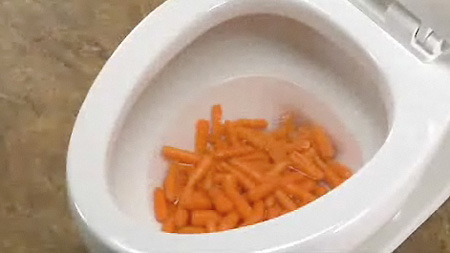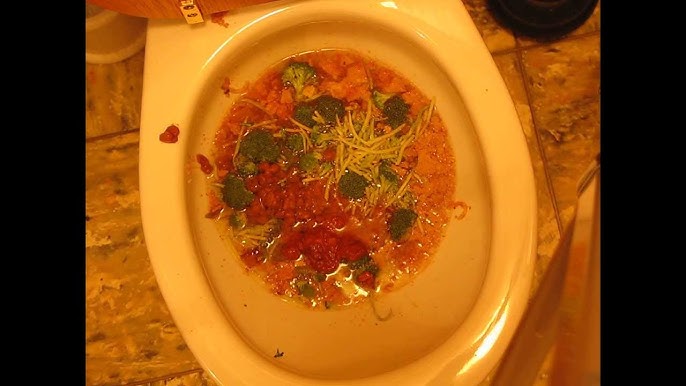Are You Allowed to Flush Food in the Toilet?
Are You Allowed to Flush Food in the Toilet?
Blog Article
What are your thoughts on Is it safe to flush food (especially rice) down the toilet??

Intro
Many people are frequently confronted with the predicament of what to do with food waste, especially when it concerns leftovers or scraps. One usual question that emerges is whether it's all right to purge food down the toilet. In this write-up, we'll explore the reasons that individuals could consider flushing food, the consequences of doing so, and different techniques for correct disposal.
Reasons that individuals might take into consideration purging food
Absence of awareness
Some individuals might not understand the possible injury caused by purging food down the toilet. They might incorrectly believe that it's a harmless method.
Comfort
Purging food down the toilet might seem like a fast and very easy remedy to taking care of unwanted scraps, particularly when there's no nearby trash bin available.
Negligence
Sometimes, individuals might simply select to flush food out of sheer idleness, without considering the repercussions of their actions.
Repercussions of flushing food down the bathroom
Environmental impact
Food waste that winds up in waterways can contribute to pollution and harm aquatic communities. Additionally, the water made use of to flush food can strain water sources.
Plumbing problems
Flushing food can result in clogged up pipes and drains pipes, triggering costly pipes repair services and aggravations.
Kinds of food that must not be flushed
Fibrous foods
Foods with coarse appearances such as celery or corn husks can get entangled in pipelines and cause clogs.
Starchy foods
Starchy foods like pasta and rice can take in water and swell, bring about blockages in pipelines.
Oils and fats
Greasy foods like bacon or cooking oils should never ever be flushed down the commode as they can strengthen and cause obstructions.
Correct disposal approaches for food waste
Making use of a waste disposal unit
For homes equipped with garbage disposals, food scraps can be ground up and flushed through the pipes system. However, not all foods are suitable for disposal in this fashion.
Recycling
Specific food packaging materials can be reused, lowering waste and minimizing ecological influence.
Composting
Composting is an environmentally friendly way to get rid of food waste. Organic materials can be composted and used to enhance dirt for gardening.
The importance of correct waste administration
Minimizing environmental injury
Correct waste administration methods, such as composting and recycling, aid lessen air pollution and protect natural deposits for future generations.
Shielding pipes systems
By preventing the technique of flushing food down the toilet, property owners can stop costly plumbing repair work and maintain the stability of their pipes systems.
Final thought
Finally, while it might be tempting to purge food down the toilet for comfort, it is essential to comprehend the possible consequences of this action. By embracing correct waste monitoring methods and getting rid of food waste responsibly, individuals can add to healthier pipes systems and a cleaner setting for all.
FLUSH FOOD DOWN THE TOILET?
FLUSHING FOOD CAN CAUSE BLOCKED DRAINS IN YOUR HOME
All of the plumbing fixtures in your home are connected to the same sewer pipe outside of your home. This outdoor sewer pipe is responsible for transporting all the wastewater from your home to the Council sewer mains. Even small pieces of food that go down the kitchen sink can cause problems for your sewer. It should therefore be obvious that flushing larger bits of food, such as meat, risks a clog in either the toilet itself or the sewer pipes. Flushing greasy food is even more problematic because oil coagulates when it cools, coating the interior lining of your pipes.
THE TOILET IS NOT A BIN
Food isn’t the only thing that people shouldn’t be flushing down the toilet. People use the toilet to dispose of all kinds of things such as tampons, makeup wipes, dental floss, kitty litter and even underwear. Water goes to great lengths to educate residents about the high costs and stress placed on wastewater treatment systems simply from people flushing the wrong stuff down the toilet. It costs taxpayers millions of dollars each year, and homeowners thousands in blocked drain repairs.
FLUSHING FOOD IS A WASTE OF WATER
Flushing food is a waste of our most precious resource - water. In June this year Level 1 water restrictions were introduced to protect water supply from drought conditions. Much of New South Wales continues to be affected by prolonged drought with recent figures revealing up to 97 per cent of the state remains in drought. Depending on whether you have a single or dual flush toilet, every single flush uses between five and 11 litres of water. In the current climate this is a huge amount of water to be wasting on flushing food that should be placed in the bin (or better yet, the compost).
https://www.jabplumbingsolutions.com.au/blog/can-you-flush-food-down-the-toilet

We hope you enjoyed our piece on . Thank you for finding the time to read through our posting. If you enjoyed our post kindly make sure you remember to pass it around. Thank you so much for going through it.
Click Here Report this page